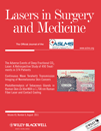A light-activated method for repair of corneal surface defects
Abstract
Background and Objective
Amniotic membrane transplantation (AMT) sealed with sutures has been routinely used to treat ocular surface defects (OSD). However, the sutures used to secure the graft on the cornea cause additional injury, infection, and scarring. A new light-activated technique, called photochemical tissue bonding (PTB), has been developed for securing amniotic membrane (AM) over the corneal surface. The purpose of this study was to compare PTB versus traditional sutures in AMT for repair of OSD.
Materials and Methods
An OSD was created in the left eye of 40 rabbits. The eyes were randomized into two repair groups: AMT using sutures and AMT using PTB with 0.1% Rose Bengal (RB) and 532 nm laser at 0.4 W/cm2 for 200 seconds. Eyes were examined for re-epithelialization, inflammation, neovascularization, and scarring histologically and biochemically on postoperative days 1, 3, 14, and 28.
Results
PTB strongly bonded AM over corneal defects. Corneal re-epithelialization did not differ significantly between the suture and PTB groups. Histology, immunohistology and Western blotting revealed that the numbers of inflammatory cells and the level of tumor necrosis factor-alpha in the PTB group were dramatically lower than those in the suture group on postoperative day 3. Many fewer neo-vessels were present in the PTB group (2.91 ± 1.00) compared to the suture group (4.33 ± 1.15) at day 28 (P < 0.05). The collagen fibers in the PTB group were well organized and orientated as assessed by second harmonic generation microscopy, suggesting that PTB treatment led to less corneal scarring.
Conclusions
PTB is a superior method for securing AM over OSD with improved wound healing compared to sutures. Lasers Surg. Med. 43:481–489, 2011. © 2011 Wiley-Liss, Inc.




